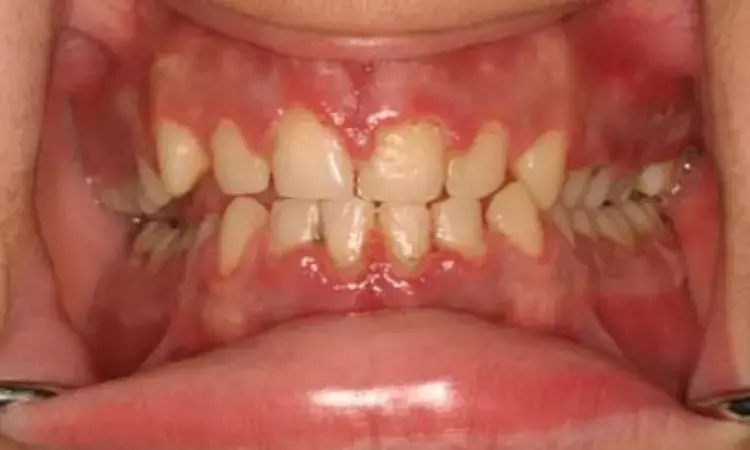- Home
- Medical news & Guidelines
- Anesthesiology
- Cardiology and CTVS
- Critical Care
- Dentistry
- Dermatology
- Diabetes and Endocrinology
- ENT
- Gastroenterology
- Medicine
- Nephrology
- Neurology
- Obstretics-Gynaecology
- Oncology
- Ophthalmology
- Orthopaedics
- Pediatrics-Neonatology
- Psychiatry
- Pulmonology
- Radiology
- Surgery
- Urology
- Laboratory Medicine
- Diet
- Nursing
- Paramedical
- Physiotherapy
- Health news
- Fact Check
- Bone Health Fact Check
- Brain Health Fact Check
- Cancer Related Fact Check
- Child Care Fact Check
- Dental and oral health fact check
- Diabetes and metabolic health fact check
- Diet and Nutrition Fact Check
- Eye and ENT Care Fact Check
- Fitness fact check
- Gut health fact check
- Heart health fact check
- Kidney health fact check
- Medical education fact check
- Men's health fact check
- Respiratory fact check
- Skin and hair care fact check
- Vaccine and Immunization fact check
- Women's health fact check
- AYUSH
- State News
- Andaman and Nicobar Islands
- Andhra Pradesh
- Arunachal Pradesh
- Assam
- Bihar
- Chandigarh
- Chattisgarh
- Dadra and Nagar Haveli
- Daman and Diu
- Delhi
- Goa
- Gujarat
- Haryana
- Himachal Pradesh
- Jammu & Kashmir
- Jharkhand
- Karnataka
- Kerala
- Ladakh
- Lakshadweep
- Madhya Pradesh
- Maharashtra
- Manipur
- Meghalaya
- Mizoram
- Nagaland
- Odisha
- Puducherry
- Punjab
- Rajasthan
- Sikkim
- Tamil Nadu
- Telangana
- Tripura
- Uttar Pradesh
- Uttrakhand
- West Bengal
- Medical Education
- Industry
Diffuse gingival enlargement can be manifestation of hematological malignancies- Case report

Greece: A recent case study published in Cureus describes an unusual case of acute myeloid leukaemia (AML) in a 26-year-old male patient who presented to the clinic with a complaint of persistent bilateral gingival bleeding in the posterior areas of the maxilla.
"Hematological malignancies can manifest in the oral cavity and that manifestation could be the only diagnostic sign as observed in this case," Vasileios Zisis, Oral Medicine/Pathology, Aristotle University of Thessaloniki, Thessaloniki, GRC, and colleagues wrote.
They added, "It is, therefore, vital for the clinician to not rule out malignancy when such a clinical situation presents and to make an appropriate early referral."
Acute myeloid leukaemia is a malignancy characterized by its extreme aggressiveness. It accounts for about 25% of leukaemia cases in the pediatric population. Therefore, in the case described, the age of the patient may be considered atypical, according to the authors.
Gingival hyperplasia may occur due to microbial-related local irritation, drug administration, mouth breathing, leukaemia, genetic disorders, Crohn’s disease, Wegener granulomatosis, and sarcoidosis. The background may be fibrotic, inflammatory, or combined. In the study, Dr. Zisis and colleagues aimed to present the diagnostic procedure for a case of gingival enlargement, which was the only sign of severe systemic disease in a young male adult.
The 26 years old male patient was referred by his dentist to the Department of Oral Medicine and Pathology, School of Dentistry, Aristotle University of Thessaloniki, Greece, complaining of persistent gingival bleeding in the posterior area of the maxilla, bilaterally, and mild pain due to food impaction in the interdental area. The patient provided written informed consent before the examination. Subsequently, the patient was examined thoroughly. The physical examination revealed diffuse reddish swelling, palpable gingival masses, bleeding on probing, and the presence of pseudopockets of 4-6mm. Clinically, a diffuse gingival enlargement was seen without lymphadenopathy.
The histopathological examination demonstrated abundant neoplastic cells of hemopoietic origin with strong and diffuse positivity for CD45 and CD68. In addition, scattered neoplastic cells exhibited mild to moderate positivity for c-kit (CD117), indicating the diagnosis of acute myeloid leukaemia, which diffusely infiltrated the lamina propria of the gingiva.
"The several conditions leading to gingival enlargement other than periodontitis or gingivitis are diagnostic challenges in clinical practices," the team wrote. "The dentist plays an important role in the timely identification of hematologic disorders." They note the significant role that dentists play in commencing leukaemia diagnosis in cases of oral manifestations.
"Therefore, these manifestations must be easily identifiable, prompting a comprehensive inquiry involving supplementary tests or a referral to a qualified practitioner to arrive at a definitive diagnosis," they concluded.
Reference:
Zisis V, Zisis S, Anagnostou E, et al. (October 30, 2023) Gingival Enlargement Can Constitute the Only Diagnostic Sign of Leukemia: Report of an Unusual Case. Cureus 15(10): e47959. doi:10.7759/cureus.47959
Dr Kamal Kant Kohli-MBBS, DTCD- a chest specialist with more than 30 years of practice and a flair for writing clinical articles, Dr Kamal Kant Kohli joined Medical Dialogues as a Chief Editor of Medical News. Besides writing articles, as an editor, he proofreads and verifies all the medical content published on Medical Dialogues including those coming from journals, studies,medical conferences,guidelines etc. Email: drkohli@medicaldialogues.in. Contact no. 011-43720751


